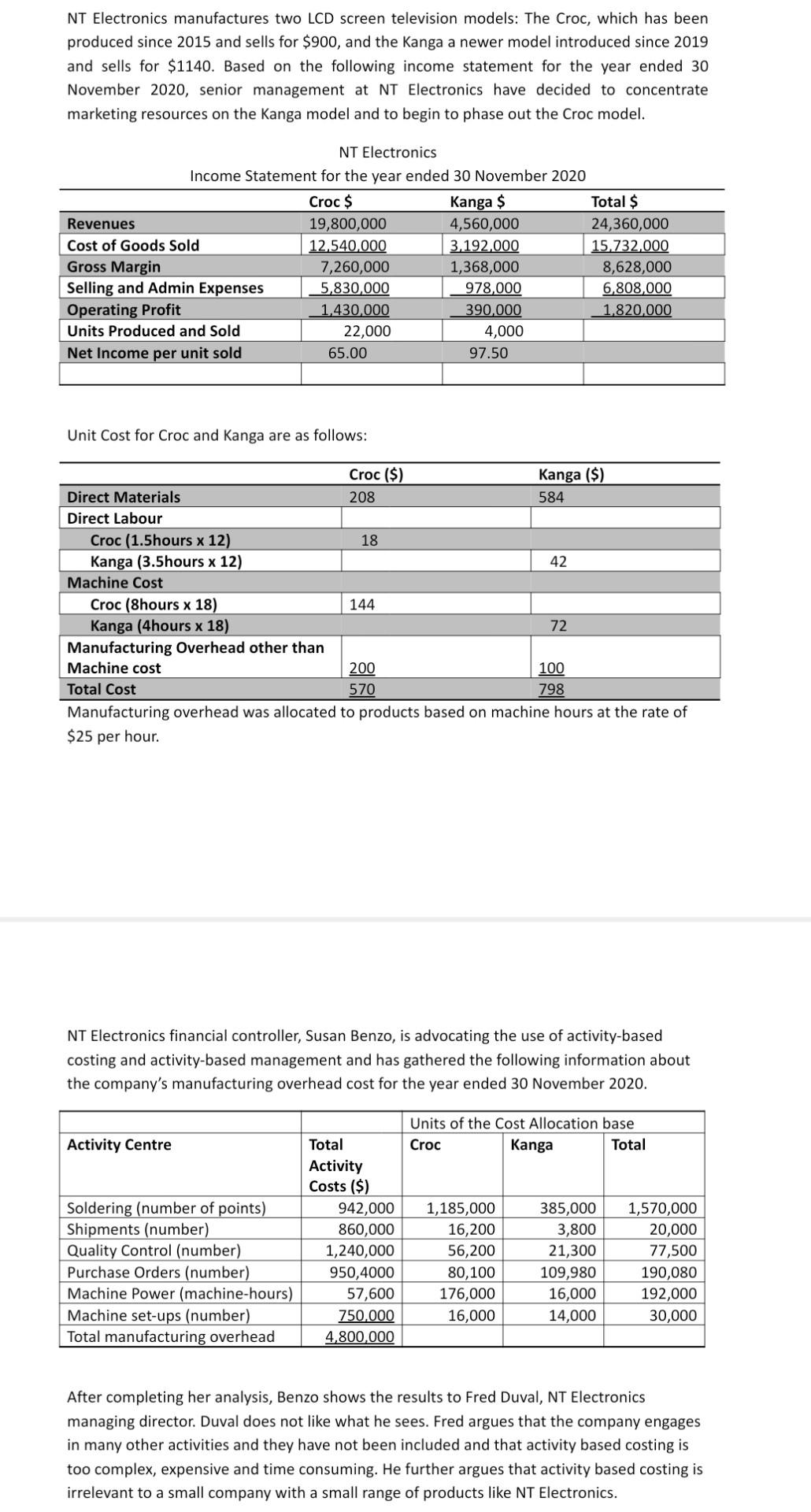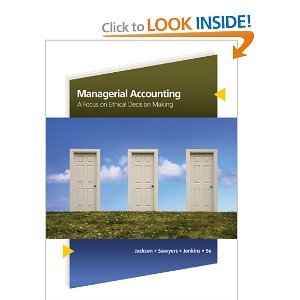Answered step by step
Verified Expert Solution
Question
1 Approved Answer
Required: a. Using activity based costing; calculate the profitability of the Croc and Kanga models. b. Explain why these numbers differ from the profitability of

Required: a. Using activity based costing; calculate the profitability of the Croc and Kanga models. b. Explain why these numbers differ from the profitability of the Croc and Kanga models calculated using the existing simple costing system. Explain about 200 words.
NT Electronics manufactures two LCD screen television models: The Croc, which has been produced since 2015 and sells for $900, and the Kanga a newer model introduced since 2019 and sells for $1140. Based on the following income statement for the year ended 30 November 2020, senior management at NT Electronics have decided to concentrate marketing resources on the Kanga model and to begin to phase out the Croc model. NT Electronics Income Statement for the year ended 30 November 2020 Croc $ Kanga $ Total $ Revenues 19,800,000 4,560,000 24,360,000 Cost of Goods Sold 12.540,000 3.192,000 15.732.000 Gross Margin 7,260,000 1,368,000 8,628,000 Selling and Admin Expenses 5,830,000 978,000 6,808,000 Operating Profit 1.430,000 390,000 1.820,000 Units Produced and sold 22,000 4,000 Net Income per unit sold 65.00 97.50 Unit Cost for Croc and Kanga are as follows: Croc ($) Kanga ($) Direct Materials 208 584 Direct Labour Croc (1.5hours x 12) 18 Kanga (3.5hours x 12) 42 Machine Cost Croc (8hours x 18) 144 Kanga (4hours x 18) 72 Manufacturing Overhead other than Machine cost 200 100 Tot 570 798 Manufacturing overhead was allocated to products based on machine hours at the rate of $25 per hour. NT Electronics financial controller, Susan Benzo, is advocating the use of activity-based costing and activity-based management and has gathered the following information about the company's manufacturing overhead cost for the year ended 30 November 2020. Units of the Cost Allocation base Croc Kanga Total Activity Centre Soldering (number of points) Shipments (number) Quality Control (number) Purchase Orders (number) Machine Power (machine-hours) Machine set-ups (number) Total manuf overhead Total Activity Costs ($) 942,000 860,000 1,240,000 950,4000 57,600 750,000 4,800,000 1,185,000 16,200 56,200 80,100 176,000 16,000 385,000 3,800 21,300 109,980 16,000 14,000 1,570,000 20,000 77,500 190,080 192,000 30,000 After completing her analysis, Benzo shows the results to Fred Duval, NT Electronics managing director. Duval does not like what he sees. Fred argues that the company engages in many other activities and they have not been included and that activity based costing is too complex, expensive and time consuming. He further argues that activity based costing is irrelevant to a small company with a small range of products like NT ElectronicsStep by Step Solution
There are 3 Steps involved in it
Step: 1

Get Instant Access to Expert-Tailored Solutions
See step-by-step solutions with expert insights and AI powered tools for academic success
Step: 2

Step: 3

Ace Your Homework with AI
Get the answers you need in no time with our AI-driven, step-by-step assistance
Get Started


